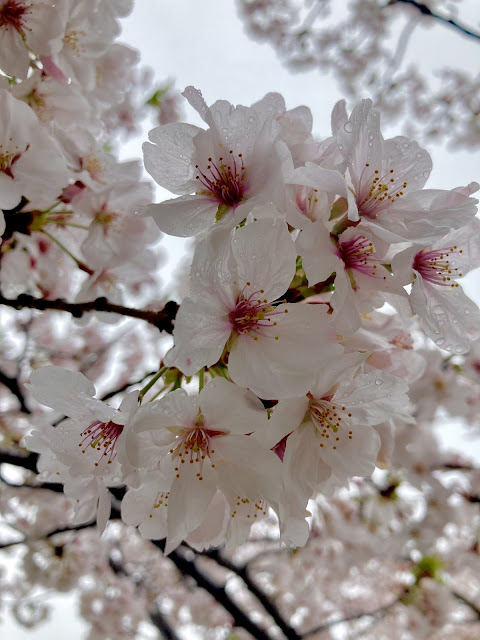Here is my current self-training regime.
OSU - AB.
移動基本
(IDO-KIHON)
The first two 連続技
(Renzokuwaza) are hand attacks, the first with closed fists from the free style position and the second
with open hands in zenkutsu-dachi. The first primarily relies upon
propulsion and moving the center; whereas, the second primarily relies
upon the whip like ‘muchiken’. The main point is to maximize the
effectiveness of each individual waza.
1. (自由立ち、自由な構え) 上段刻み突きから上段追い突きそして中段逆突き (Jiyu-dachi,
jiyu na kamae) Jodan kizami-zuki kara jodan oi-zuki soshite chudan gyaku-zuki.
2. (前屈立ち) 手刀上段外回し打ちから手同じで手刀上段内回し打ち、手刀縦回し打ちそして背刀上段外回し打ち (Zenkutsu-dachi) Shuto jodan sotomawashi uchi kara te onaji
de shuto jodan uchimawashi uchi, shuto tatemawashi uchi soshite haito jodan
sotomawashi uchi.
The next three combinations are ‘Legs followed by hands’.
This requires the high and compact chambering of each keriwaza, relaxed and
sharp kicking snap (whipping out and back, again applying the principles
ofmuchiken) and body power and weight into to follow-up tewaza; in particular
by ‘sinking the support leg’ after kicking to expand again for the drive
forward.
3. (自由立ち、自由な構え) 中段前蹴り蹴上げから上段追い突きそして中段逆突き (Jiyu-dachi, jiyu na kamae) Chudan mae-geri keage kara jodan
oi-zuki soshite chudan gyaku-zuki.
4. (自由立ち、自由な構え) 回し蹴りから後ろ蹴り蹴込み、裏拳上段横回し打ちそして中段逆突き (Jiyu-dachi, jiyu na kamae) Mawashi-geri kara uraken jodan
yokomawashi uchi soshite chudan gyaku-zuki.
5. (前屈立ち、自由な構え) 横蹴り蹴上げから足同じで横蹴り蹴込みそして中段逆突 (Zenkutsu-dachi, jiyu na kamae) Yoko-geri keage kara
yoko-geri kekomi soshite chudan gyaku-zuki.
The next five idokihonwaza I’m working are the five
foundational ukewaza followed by counteractions. The main focal point is to
prioritize the initial action (unsoku, tachikata, waza) before making the
follow up actions. In sum, ‘attack with uke’. Stressing the 腰の回転 (koshi no kaiten) at
the very last moment and the maximization of the 引き手
(hiki-te).
6. (前屈立ち) 上段揚げ受けから上段逆突き (Zenkutsu-dachi) Jodan age-uke kara jodan gyaku-zuki.
7. (前屈立ち) 中段外受けから中段逆突き (Zenkutsu-dachi) Chudan soto-uke kara chudan gyaku-zuki.
8. (前屈立ち) 中段外受けから上段刻み突きそして中段逆突き (Zenkutsu-dachi) Chudan uchi-uke kara jodan kizami-zuki
soshite chudan gyaku-zuki.
9. (前屈立ち) 下段払いから手同じで裏拳上段縦回し打ち、手同じで上段段横回し打ちそして中段逆突き
(Zenkutsu-dachi) Gedan-barai kara te onaji de uraken jodan tatemawashi uchi, te
onaji de uraken jodan yokomawashi uchi soshite chudan gyaku-zuki.
10. (後屈立ち) 手刀中段受けから刻み前蹴りそして中段縦四本貫手
(Kokutsu-dachi) Shuto chudan-uke kara kizami mae-geri soshite chudan
tateshihon-nukite.
The final waza is the classic Nakayama Masatoshi Sensei’s
‘enpi combination’. The main focus is on junansei of the shoulders, use of the
core, and transitions to maximize damage damage to the opponent with the
respective elbow strikes.
11. (前屈立ち) 縦猿臂から前猿臂、寄り足(騎馬立ち) 横猿臂、回転しながら猿臂、回りながら下がって横揚げ猿臂そして落とし猿臂
(不動立ち) (Zenkutsu-dachi)
Tate-enpi kara mae-enpi, yoriashi (Kiba-dachi) yoko-enpi, kaitenshinagara-enpi,
mawarinagarasagatte yoko-age-enpi soshite otoshi-enpi (fudo-dachi).
型
(KATA)
鉄騎初段
(Tekki Shodan)
十手
(Jitte)
舞鶴小
(Maizuru Sho)
組手
(KUMITE)
Presently working some of my favorite nagewaza, in Jiyu-Kumite, namely:
A. Ippon
seoinage (一本背負投):
Single-handed shoulder throw.
B. Seoi nage
(背負投): Shoulder throw.
C. Uchi mata
sukashi (内股透):
Inner thigh void throw.
D. Uki
otoshi (浮落):
Floating drop.
© André Bertel. Oita City, Japan (2024).




.jpg)



.png)

%20-%20Copy.png)
.png)
.png)
.png)
.png)
.png)
.png)





%201.JPG)
.JPG)


